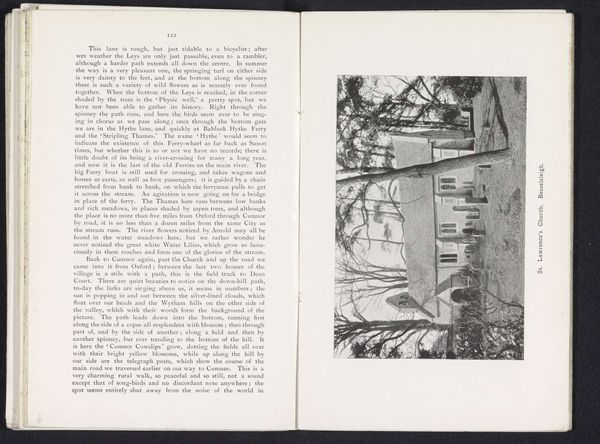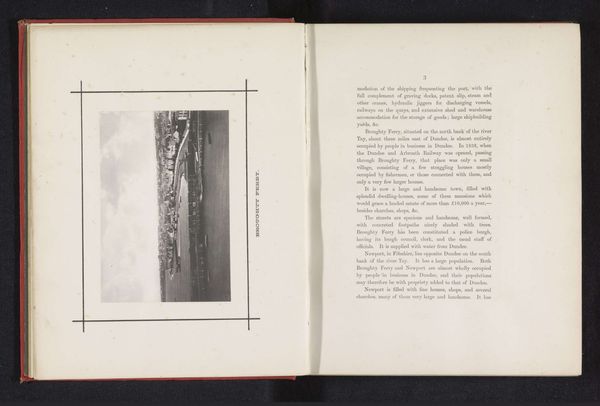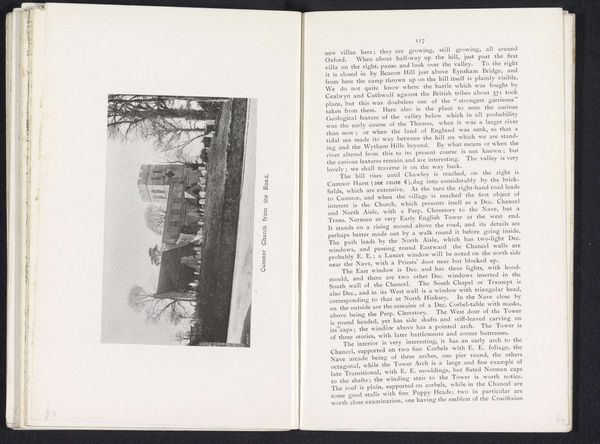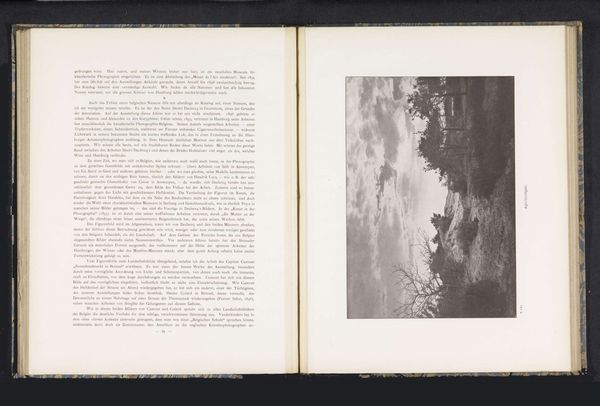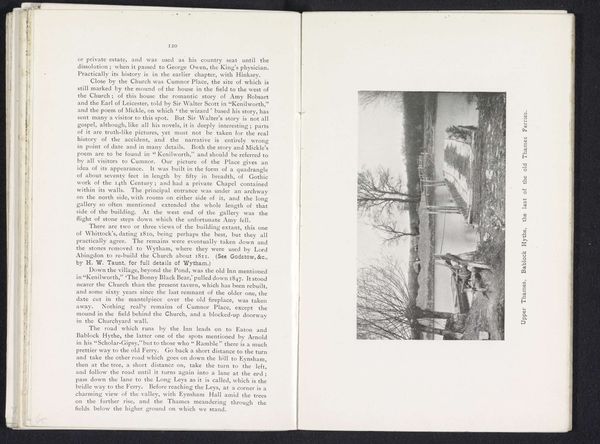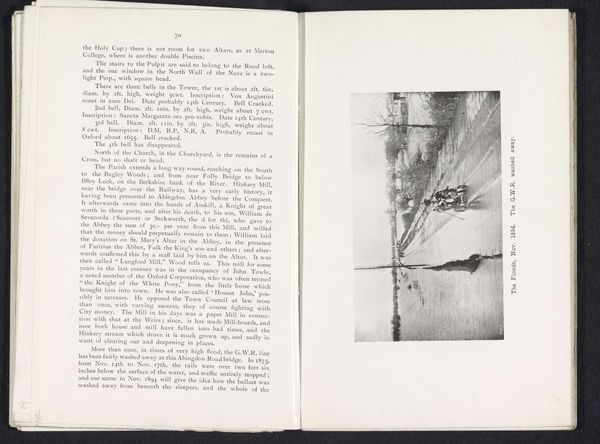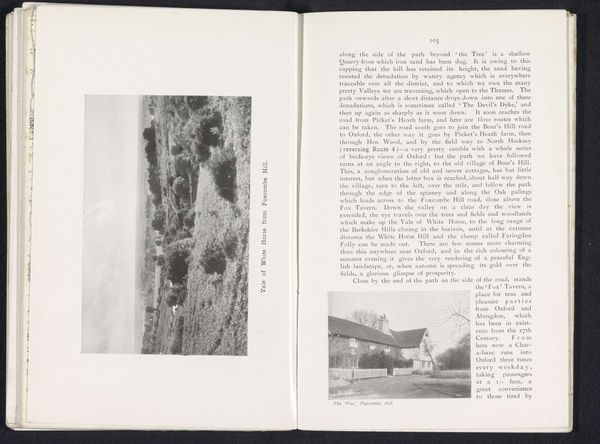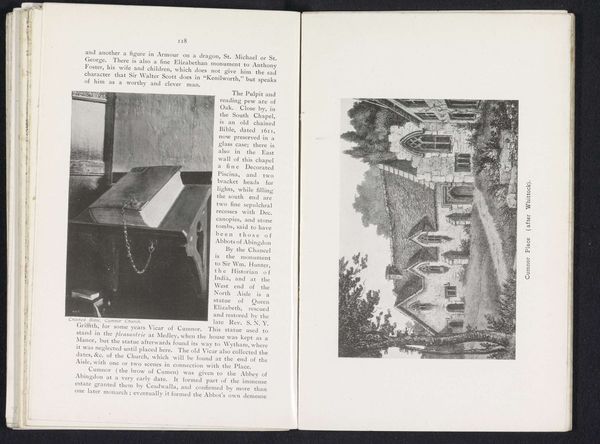
photography
#
script typeface
#
script typography
#
editorial typography
#
hand drawn type
#
landscape
#
personal journal design
#
photography
#
hand-drawn typeface
#
stylized text
#
thick font
#
handwritten font
#
historical font
Dimensions: height 88 mm, width 138 mm
Copyright: Rijks Museum: Open Domain
This is a photograph of Ruskin's road-makers at work in North Hinksey. Observe the men laboring with picks and shovels, set against the backdrop of humble cottages and the rolling landscape. This scene is pregnant with the symbol of physical toil. This reflects Ruskin's belief in manual labor as a means of achieving not only an aesthetic ideal but also a moral and spiritual one. Think back to images of laborers from earlier times, such as those found in medieval tapestries or even ancient Egyptian tomb paintings. The worker—the common man—is an archetypal figure whose symbolism shifts across time. In some contexts, labor is a curse, while in others, it is ennobling, as Ruskin suggests here. Consider the psychological weight of the image. The act of physically shaping the earth, of carving a path, resonates with mankind's eternal desire to leave their mark on the world, to impose order on chaos. It is a cycle of continuous reinvention—a symbol that has been revived in various forms and imbued with new significance across generations.
Comments
No comments
Be the first to comment and join the conversation on the ultimate creative platform.

